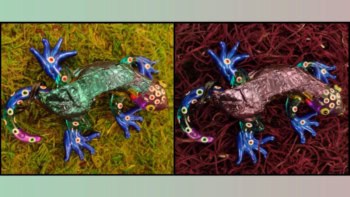Photonics West will once again bring delegates to the Moscone Center in San Francisco for its unique combination of scientific conferences, industry symposia and world-class technical exhibitions
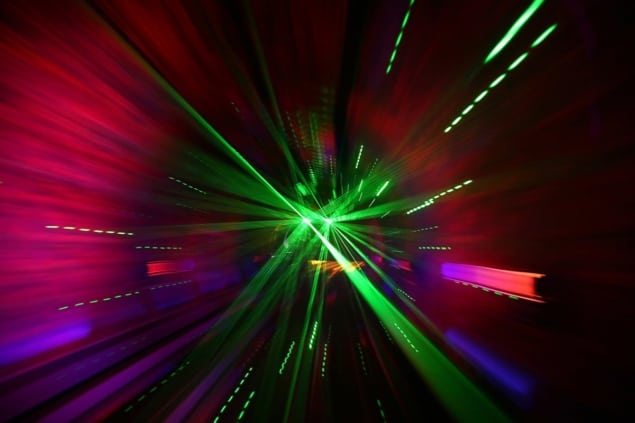
For the first time in two years scientists and engineers will be gathering in San Francisco for Photonics West, the largest global event for the optics industry. The event kicks off on Saturday 22 January with the BiOS conference and exhibition, which focuses on biophotonics, biomedical optics and imaging, and highlights some of the most exciting emerging research topics through its popular Hot Topics session.
The main Photonics West event runs throughout the week, with conferences on lasers and optics, a dedicated industry programme, and a technical exhibition featuring more than 800 companies from all over the world. Plenary sessions for the OPTO and LASE conferences include presentations on laser fusion, topological quantum photonics and high-power ultrafast lasers.
The programme sees a welcome return for Quantum West, which this year will be a day-long symposium that will highlight the photonics technologies and market developments that are helping to build a commercial quantum ecosystem. Other industry events include the Start-Up Challenge and 2022 Prism Awards, as well as the co-located AR | VR | MR conference on hardware solutions for augmented and virtual reality.
The exhibition floor will be open from Tuesday to Thursday, allowing delegates to connect with suppliers and learn about the latest innovations in components, instruments and systems. Vendors will also be giving a series of product demonstrations throughout the exhibition to provide attendees with an expert insight into the latest technologies. Some of the latest advances are highlighted below.
HÜBNER Photonics introduces femtosecond fibre lasers from VALO Innovations
HÜBNER Photonics has added short-pulse femtosecond fibre lasers to its technology portfolio through its acquisition of VALO Innovations. The fibre lasers developed by VALO Innovations deliver market-leading short-pulse performance, with pulse lengths of less than 50 fs and peak powers above 2 MW from a compact and stable turn-key system. Combined with computer-controlled compensation for dispersion and other nonlinear effects, these femtosecond fibre lasers are ideal for applications in bioimaging, spectroscopy and micromachining.
“It’s a great pleasure to be a part of such a strong reputable group such as HÜBNER Photonics,” comments Oliver Prochnow, co-founder and CEO of VALO Innovations. “We are looking forward to the opportunity of growing the VALO laser product portfolio and accelerating our market access with the support of HÜBNER Photonics and its partners.”

VALO’s femtosecond lasers will become a new product line in HÜBNER Photonics’ broad portfolio of high-performance laser products. Along with C-WAVE, the company’s award-winning widely tunable single-frequency CW laser, these include the C-FLEX laser combiners and the Cobolt range of single-frequency and Q-switched nanosecond lasers.
“We are extremely excited to add the unique femtosecond laser technology of VALO Innovations to our group,” comments Håkan Karlsson, head of HÜBNER Photonics. “We are looking forward to offering our customers these highly complementary products with the performance, quality and support they are accustomed to receiving from us.”
- Visit HÜBNER Photonics at booth 8027 at the BiOS exhibition and 3027 at Photonics West
Tri-colour pulsed laser combines three wavelengths in one device
New from PicoQuant is Prima, a diode laser module that offers access to three separate wavelengths in either pulsed-picosecond or continuous-wave mode. The standalone laser module is fully computer controlled and emits light at three distinct wavelengths: 635, 510 and 450 nm. It has been designed to allow researchers to study their samples at different excitation wavelengths, avoiding the need to buy and set up multiple devices.
“We used our 25 years of expertise in laser development to create an affordable, compact module that can emit red, green, and blue light,” says Guillaume Delpont, product manager at PicoQuant. “That meets most of the excitation needs for daily lab tasks, including lifetime or quantum yield measurements, and photoluminescence and fluorescence measurements.”

PicoQuant has also updated the MultiHarp 160, a scalable plug-and-play unit for event timing and time-correlated single-photon counting (TCSPC), to include on-board event filters that can be defined by the user. These offer an efficient way to reduce the file sizes and amount of data that must be sent via the instrument’s external interfaces. The MultiHarp 160 is optimized for applications requiring up to 64 timing channels with high sustained count rates, a time resolution of 5 ps and an ultrashort dead time of less than 650 ps.
- Learn more about PicoQuant’s latest products at booth 8315 of the BiOS exhibition or 3315 at Photonics West
Single-photon counting system combines speed with precision
Photek has launched a next-generation single-photon counting system, the AuraTek PCS, that significantly reduces the measurement time by providing highly parallel and fully independent readout across 256 separate channels. For applications in fluorescence lifetime imaging, the AuraTek PCS combines excellent timing performance with fast acquisition times, offering a time resolution of 60 ps and high count rates across all independent channels. The AuraTek PCS is also ideal for photon-counting applications in quantum science, with dark noise as low as a few counts per second per channel – orders of magnitude lower than competitive technologies.
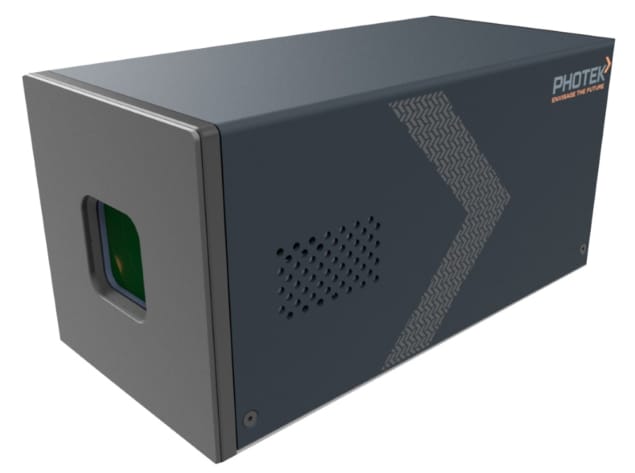
The easy-to-use system is self-triggering and event driven, with time and amplitude data provided for each photon detected. The maximum count rate for each channel is 480 kcps, with a maximum total system count rate of around 10 Mcps. An optional user-provided event identifier can be time stamped and included in the data stream, while the embedded sensor can be configured for photon sensitivity from the deep ultraviolet through to red wavelengths.
The 160 MHz clock used by the sensor head can be used to synchronize external circuits, or the user can choose to provide their own 160 MHz clock. Software is also provided to monitor data acquisition in real time and to optimize data post-processing.
- Tom Conneely from Photek will demonstrate the AuraTek PCS at 2.30 pm on 26 January (Photonics West Demo Area 1, Hall ABC). For more information visit Photek at booth 2067.
Laue diffraction system enters industrial arena
The Laue Crystal Orientation System from Photonic Science exploits X-ray diffraction to characterize the orientation of single-crystal materials along specific crystallographic planes. The electro-optical properties of single crystals are strongly dependent on their crystallographic orientations, and the Laue system offers real-time crystal orientation with an accuracy of less than 0.1°. “We started selling these systems and cameras for scientific purposes, but now they are being used more for industrial applications,” says Daniel Brau, managing director of Photonic Science.
The diffraction patterns obtained from the system can be used for the quality control of nickel alloys, semiconductor substrates, quartz and sapphire windows, and bulk laser materials. The tool is routinely used for orienting the crystal before cutting from the bulk, as well as evaluating whether the sample is a true single crystal, quantifying the misorientation of imperfections, and detecting changes in orientation throughout the crystal.
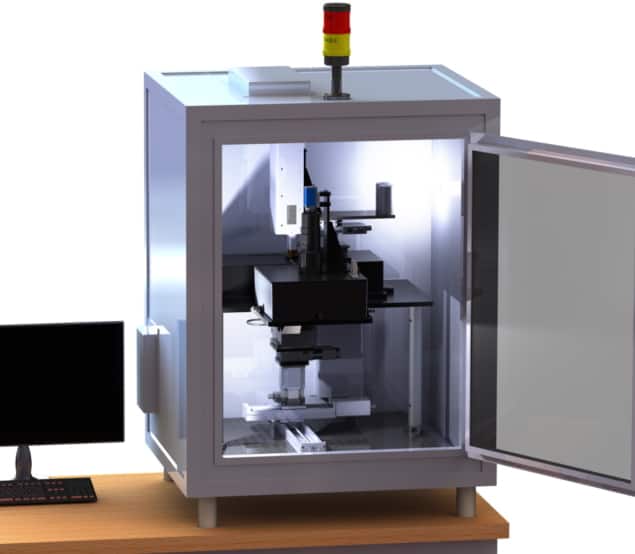
The system exploits an intense X-ray beam focussed to less than 0.2 mm on the sample, along with a low-noise large-area X-ray detector. This combination requires just 25 W of effective power, eliminating the need for complex cooling and power-hungry installations.
“Since the X-ray beam footprint is much smaller, we can help material scientists and physicists to identify sub-grain structures and orientation,” adds Brau. “The system can automatically acquire up to 10,000 orientation measurements on large polycrystalline samples such as solar cells, which can help to understand the effect of grain orientation versus cell efficiency.”
- To find out more about the Laue system, visit Photonic Science at booth 2067 of the Photonics West exhibition
Achromatic fibre couplers offer high efficiency and long-term stability
Schäfter + Kirchhoff offers a series of achromatic fibre couplers and collimators that have been designed to couple multiple wavelengths into single-mode and polarization-maintaining optical fibres. They offer high coupling efficiency, along with excellent pointing stability and long-term stability. All the couplers provide an adjustable focus and support many different types of connector, while amagnetic fibre couplers made from titanium are also available.
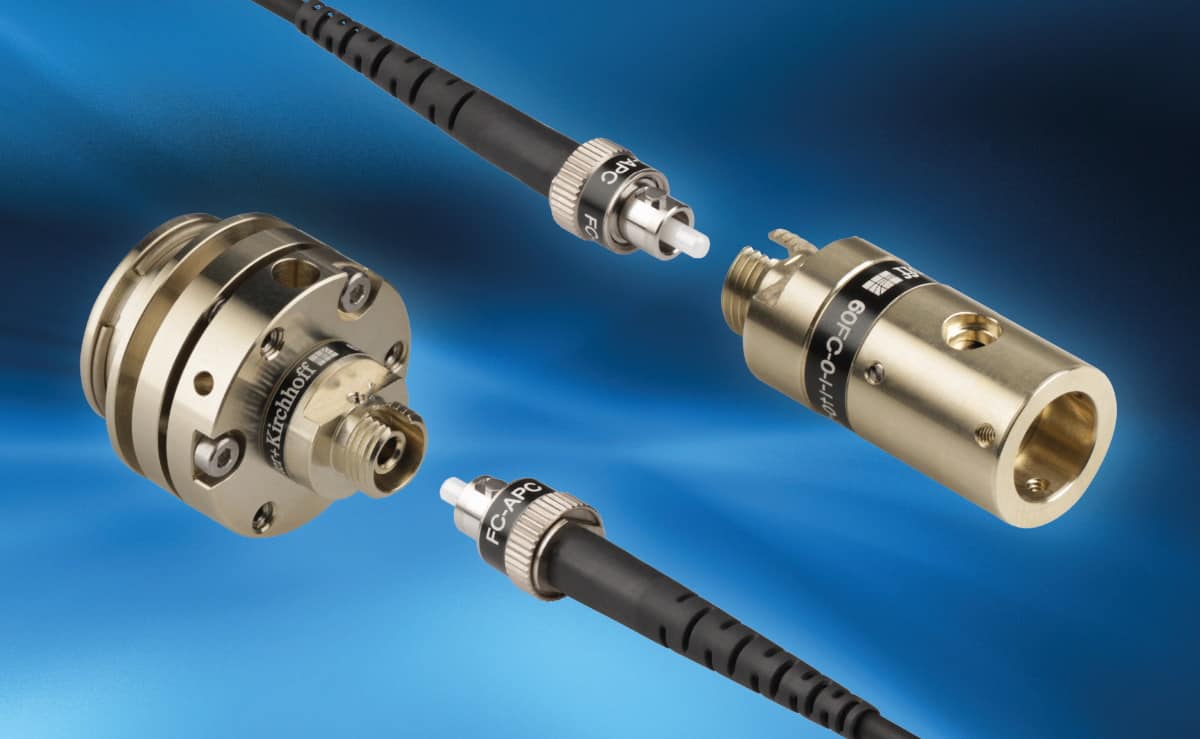
One part of the product range, the 60SMF series of high-precision fibre couplers has been updated to include ceramic bearings and fine-thread adjustment screws, enabling the focus to be adjusted more easily and more precisely than with previous versions. These devices, which have a diameter of 19.5 mm, have also been optimized to deliver excellent pointing stability as well as the proven long-term stability of earlier devices.
The 60FC-SF series of fibre collimators have also been upgraded to improve the pointing stability and reduce the backlash when setting the focus. These collimators – which can either be used to collimate the radiation emitted from an optical fibre, or in reverse to couple a beam into an optical cable – have now been engineered with a super-fine thread to enable more precise focus setting with a pitch of 0.35 mm.
All the collimators and couplers available from Schäfter + Kirchhoff support focal lengths up to 18 mm, and come with a choice of aspheres, achromats and apochromats. Various anti-reflective coatings are available for wavelengths ranging from the ultraviolet to the infrared.
- Schäfter + Kirchhoff was planning to demonstrate its full range of products at both BiOS and Photonics West, but had to cancel last minute due to the surge in COVID-19 cases and the accompanying health risks. Visit the Schäfter + Kirchhoff website to find out more about the company’s products.
Complete solution tackles high-speed imaging challenges
The Stamina imaging system from Lambert Instruments provides a comprehensive imaging solution that can be used to record high-speed events in challenging light conditions. Images can be captured, viewed and combined from up to nine different cameras at the same time, and the system can be fully customized to provide greater flexibility as well as easy integration into an existing set-up.
The Stamina system combines advanced hardware with easy-to-use software to form a complete imaging system. The software makes it easy to attach a new camera to the set-up, and supports a wide range of cameras for maximum flexibility. Multiple cameras connected to the system can be viewed and recorded at the same time.

The system synchronizes the images taken with all of the different cameras, and streams the image data directly to a hard drive to allow images to be captured over long periods of time. Stamina is also supplied with an external Application Programming Interface (API) to enable additional customization and integration.
- Visit Lambert Instruments at booth 2067 to find out more about the Stamina imaging system
Laser platform offers precision processing of optical components
NYFORS will be showcasing the capabilities of a laser-processing platform that has been designed for the manufacture of high-performance photonics components. The system, called SMARTSPLICER, is a ring-shaped CO2 laser beam that provides precise and contamination-free heating of glass components, making it ideal for tasks such as fusion splicing and glass processing.
In an array splicing process, the platform has been shown to create homogeneous, high-strength splices of 10 fibres or more in a row. High-precision translation stages achieve a placement accuracy of better than ±1 µm, with a spacing between fibres of less than 250 µm.
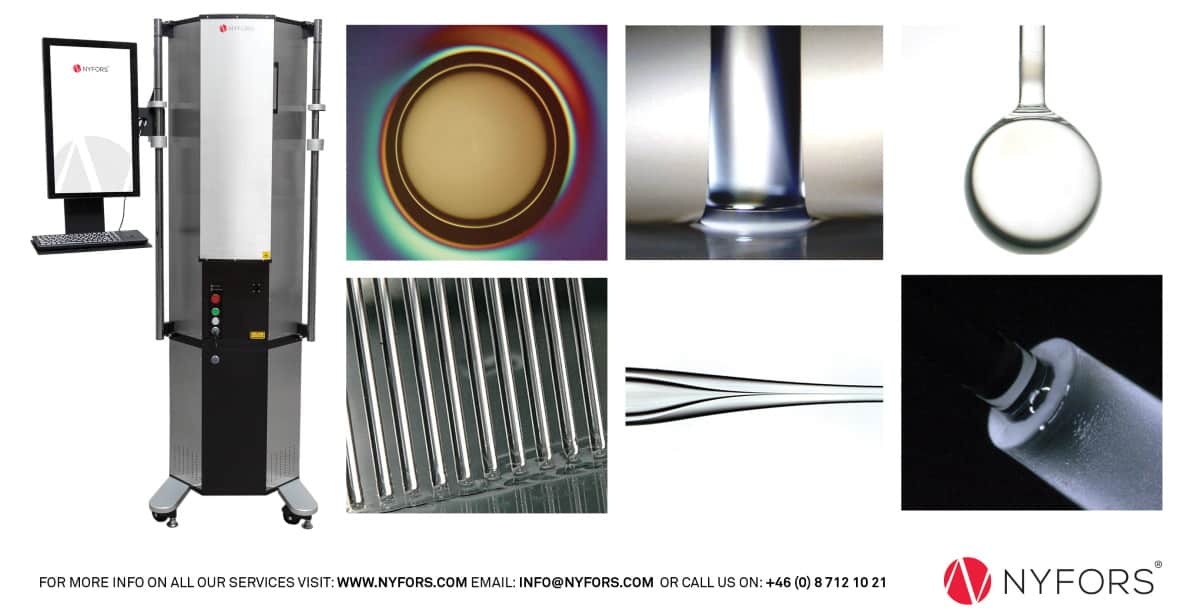
The SMARTSPLICER platform also offers an effective solution for producing ball lenses, with the vertical splicing and ring-shaped heat zone allowing ball lenses with both large and small diameters to be produced with a high degree of homogeneity. “Precise control of the CO₂ laser power, combined with high-accuracy translation stages, offers excellent repeatability and control over the final shape and size of the lenses,” comments Erik Böttcher, CEO of NYFORS.
Outstanding performance has also been achieved when using the platform for splicing gradient-refractive index (GRIN) lenses. “For example, standard fibres can be spliced to the low melting-point, doped glass of GRIN lenses with no component damage,” adds Böttcher. One other unique capability, called linear splicing, allows objects of different sizes and made from dissimilar materials to be joined together with a high-strength and contamination-free bond.
- NYFORS will demonstrate the capabilities of the SMARTSPLICER platform at 4.00 pm on Wednesday 26 January (Demo Area 2, Hall D). To find out more, visit the NYFORS team at booth 3201.


